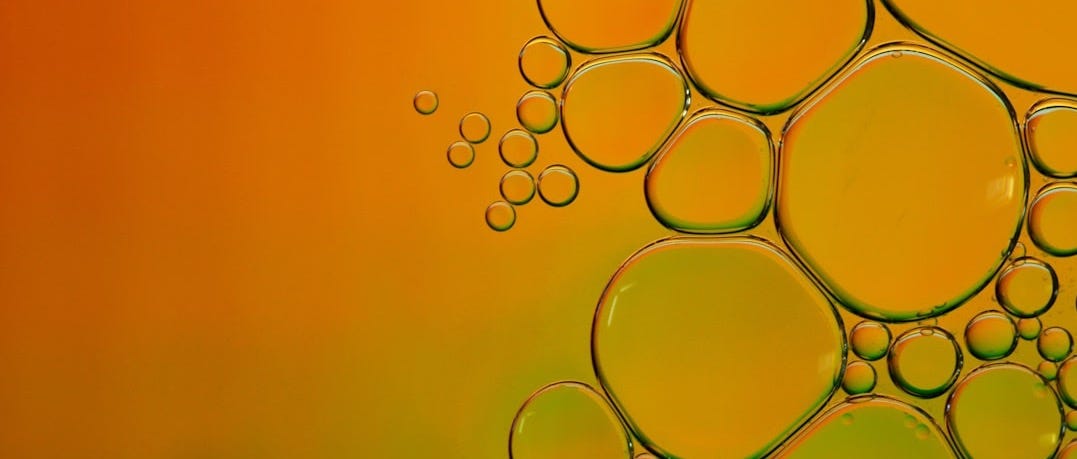The Hidden Danger in Your Kitchen: Why Seed Oils Are Destroying Your Health (And What to Use Instead)

The Silent Toxin in Your Pantry
Imagine pouring a spoonful of rancid, oxidized oil into your food every day. Sounds disgusting, right? Yet, that’s exactly what millions of people are doing—unknowingly—when they consume industrial seed oils.
These oils, marketed as "heart-healthy" alternatives to traditional fats, are some of the most harmful substances in the modern diet. They’re hidden in everything from salad dressings to fast food, and they’re wreaking havoc on your cells, metabolism, and long-term health.
Today, we’ll uncover:
What seed oils are and why they’re toxic
How they destroy your cell membranes
Which fats you should be eating instead
The science-backed way to protect your health
Let’s dive in.
What Are Seed Oils? (And Why Are They Everywhere?)
Seed oils—like soybean, canola, corn, cottonseed, safflower, and sunflower oil—are extracted using high heat, chemical solvents, and industrial processing. Unlike traditional fats (butter, tallow, olive oil), they were never part of the human diet until the 20th century.
Yet today, they make up over 20% of the average person’s calories (Mercola, 2023).
The Big Problem: Linoleic Acid (LA)
Seed oils are loaded with linoleic acid (LA), an omega-6 polyunsaturated fat (PUFA). While we need some omega-6 fats, the modern diet delivers far too much—and this imbalance fuels chronic inflammation, oxidative stress, and disease (DiNicolantonio & O’Keefe, 2018).
Here’s why LA is so dangerous:
It Oxidizes Easily
Unlike stable saturated fats (e.g., coconut oil, butter), LA is fragile and prone to lipid peroxidation—a process that creates toxic byproducts like 4-HNE, which damages DNA, proteins, and mitochondria (Ayala et al., 2014).
It Stays in Your Body for Years
Once consumed, LA embeds itself in your fat tissues and cell membranes, where it continues to generate inflammation long after you eat it (Ramsden et al., 2013).
It Weakens Your Cell Membranes
Your cells are surrounded by lipid membranes, which need to be strong and flexible. LA makes these membranes more fragile, leaving them vulnerable to oxidative damage (Hulbert et al., 2007).
How Seed Oils Break Your Metabolism
1. They Sabotage Your Mitochondria
Your mitochondria (the energy powerhouses of your cells) rely on healthy fats to function. But when LA oxidizes, it:
Disrupts cardiolipin, a crucial fat in mitochondrial membranes (Mancuso et al., 2000).
Generates free radicals, leading to fatigue, brain fog, and chronic disease (Shibabaw, 2021).
2. They Hijack Your Appetite
Seed oils are a staple in ultra-processed foods, which are engineered to be addictive. Studies show that high-LA diets:
Increase cravings by disrupting hunger hormones (Khan et al., 2022).
Promote obesity by altering fat storage (Nutrients, 2023).
3. They Fuel Modern Diseases
Heart disease? LA oxidizes LDL cholesterol, driving atherosclerosis (Ramsden et al., 2016).
Cancer? High LA intake is linked to tumor growth (Zhou et al., 2021).
Alzheimer’s? Oxidized LA damages brain cells (Morris et al., 2003).

The Fats You Should Be Eating
Not all fats are created equal. Here’s what to prioritize:
✅ Safe Fats (Eat These)
Butter/Ghee, best for cooking, baking
Beef Tallow, best for high-heat frying
Coconut Oil, best for energy, keto diets
Olive Oil, best for cold uses (check for purity!)
Macadamia Nuts, best for low-LA snack
❌ Toxic Fats (Avoid These)
Soybean oil
Canola oil
Corn oil
Cottonseed oil
Sunflower/safflower oil
Pro Tip: Even "healthy" oils like avocado and olive oil are often cut with seed oils. Buy from trusted sources!
How to Detox from Seed Oils
Purge Your Pantry – Toss anything with soybean, canola, or corn oil.
Cook with Stable Fats – Use tallow, Ghee, or coconut oil.
Eat Low-LA Animal Foods – Choose grass-fed beef, lamb, and wild-caught seafood.
Support Your Mitochondria – Take carnosine or beta-alanine to combat oxidative stress (Hipkiss, 2009).
Final Thought: Your Cells Deserve Better
Your body is made of fats—they form your brain, hormones, and cell membranes. When you eat toxic seed oils, you’re literally building your cells out of rancid, inflamed material.
But the good news? You can repair this. Ditch the seed oils, embrace real fats, and watch your energy, mental clarity, and longevity soar.
Your future self will thank you.
Stay strong,
Christof
References:
Ayala, A., Muñoz, M. F., & Argüelles, S. (2014). Lipid peroxidation: Production, metabolism, and signaling mechanisms of malondialdehyde and 4-hydroxy-2-nonenal. Oxidative Medicine and Cellular Longevity, 2014, 360438.
DiNicolantonio, J. J., & O’Keefe, J. H. (2018). Omega-6 vegetable oils as a driver of coronary heart disease. Open Heart, 5(2), e000946.
Mercola, J. (2023). Linoleic acid—The most destructive ingredient in your diet. Nutrients, 15(14), 3129.
Ramsden, C. E., et al. (2016). Re-evaluation of the traditional diet-heart hypothesis. BMJ, 353, i1246.
Disclaimer:
This content is for educational purposes only and does not substitute medical or psychological advice. Please consult a licensed professional before making health-related changes.
© millivital Academy LLC – Full Disclaimer




